![]() Sometimes in the mid-December barrage of lists for the best albums of the year, the best songs released this year get ignored and forgotten. Of course its likely that a handful of said songs played a key role in their respective album winding up on a “best albums” list, but what about the really great songs on the not-so-great albums? As with the past few years, I’ve committed to giving songs in both of those categories a chance to get another look via an end of the year retrospective. What makes a song one of my best of the year? It could be anything from simply masterful songwriting, great lyricism, or even a courageous attempt at a stylistic shift or experiment (of course, it still has to be a great song). To force myself to make honest choices, I limit the list to ten, and the order of the list has as much to do with play counts as it does the more intangible qualities I listed above. Now to quote Monty Python to myself: “Get on with it!”
Sometimes in the mid-December barrage of lists for the best albums of the year, the best songs released this year get ignored and forgotten. Of course its likely that a handful of said songs played a key role in their respective album winding up on a “best albums” list, but what about the really great songs on the not-so-great albums? As with the past few years, I’ve committed to giving songs in both of those categories a chance to get another look via an end of the year retrospective. What makes a song one of my best of the year? It could be anything from simply masterful songwriting, great lyricism, or even a courageous attempt at a stylistic shift or experiment (of course, it still has to be a great song). To force myself to make honest choices, I limit the list to ten, and the order of the list has as much to do with play counts as it does the more intangible qualities I listed above. Now to quote Monty Python to myself: “Get on with it!”

The Metal Pigeon’s Best Songs of 2014:
1. Insomnium – “Lose to Night” (from the album Shadows of a Dying Sun)
[youtube https://www.youtube.com/watch?v=vw81mcIhDt8?rel=0&w=560&h=315]
Its safe to say that Insomnium’s Shadows of a Dying Sun was my most anticipated album of 2014, and while it ultimately didn’t live up to the glorious heights of its predecessor One For Sorrow, it was still a very, very good album with some truly spectacular moments. The moment that stuck with me the most was the troubled ballad “Lose to Night”, and I’m going to do something I hardly ever do and quote what I wrote about it in my original review:
The untarnished gem on this album is “Lose to Night”, a song with an achingly beautiful chorus and note-perfect encapsulating verses. This is my most listened to song on an album that I must have spun at least a few dozen times by now, its the track that practically bleeds out the core musical identity of this band. Everything about it is perfect to me, from its tribal-esque intro drum patterns, to the circular guitar melodies within the verses where Sevanen growl-speaks about a litany of regrets, to Friman’s shining clean vocal performance in the chorus with that delicately hook laden vocal melody. I love that during said chorus, subtly buried in the mix is an electric guitar gently echoing Friman’s vocal melody beat for beat, along with Sevanen’s distant growls adding just the right touch of stormy intensity. I love that its a song about the decay of a relationship, but Friman’s prose is sparse and interpretative enough for it to apply to any circumstance —- the narrator could be speaking to his parents, or his sibling, or his past. I love that instead of associating a barren heart with romance, Friman dishes a curve ball by singing “No more fear in me / This heart’s stone inside”, while adding that “Every day must lose to night / Fade and die”. Perhaps I’m reading too much into this here but these strike me as very Finnish in their inherent nature —- slightly gloomy yes, but beautiful sentiments despite their despairing tone.
Insomnium, as well as a few other fellow Finnish metal artists seem to have a grasp on illustrating bleak, inner turmoil better than any other artist within the genre. It must be something about living there that does it, a result of their cultural identity and environment perhaps? I don’t know and I’d bet that they don’t either, but what is amazing to me is how their artistic interpretations can sound so vivid and true to people thousands of miles away in places that are quite unlike Finland (ahem, like Houston, Texas for starters). This is a haunting song, and that’s precisely what it has done to me —- I wouldn’t be able to shake it off if I tried.
2. Allen/Lande – “Lady of Winter” (from the album The Great Divide)
[youtube https://www.youtube.com/watch?v=3_OvrGEbMvo?rel=0&w=560&h=315]
Something just occured to me a second ago when considering this singular masterpiece on Allen/Lande’s newest album —- maybe I love this song so much because it reminds me of Dio. It should be him singing this song, or at the least this should be a time-worn Dio classic that Jorn Lande decided to cover. Like many, I miss the departed legendary vocalist and metal icon, and maybe its more that I miss his particularly distinctive stylistic choices. On “Lady of Winter” you’ll get a sense of what I mean when you hear Lande croon out the lyrics in the second verse: “Winter lady crystal tears /In the shadow drawing near / Will you show me all your fear?”. It was noted that Lande himself contributed to writing lyrics and vocal melodies for this album, and if he did so on “Lady of Winter” then its no mystery who he was channeling.
Whats more surprising however is that The Great Divide was penned by ex-Stratovarius guitarist Timo Tolkki as opposed to Magnus Karlsson who handled the previous three Allen/Lande albums. I can’t begin to remember the last time I enjoyed a Tolkki penned song, but kudos to him for keeping his extravagant tendencies in check and delivering one of the flat out greatest pure heavy metal songs I’ve heard in a long time. The album was okay, certainly passable, but “Lady of Winter” with its huge, monumentally towering chorus is the sort of gem that will be on my iPod for years to come. Its also the sort of metal song that I’m always afraid everyone will stop making one day, and so thankfully my fears are abated.
3. Falconer – “At the Jester’s Ball” (from the album Black Moon Rising)
[youtube https://www.youtube.com/watch?v=1rMhLO8JFPI?rel=0&w=560&h=315]
To understand just how truly masterful Falconer guitarist/songwriter Stephan Weinerhall and vocalist Mathias Blad truly are at their craft, take a listen to the chorus on this deep cut off 2014’s Black Moon Rising. Blad’s effortless clarion vocals skip and shuffle in a most waltz-like manner across Weinerhall’s ballroom imagery, “I am dancing in the waltz, come join in one and all” —- the song’s narrator a self-professed hypocritical, power-hungry misanthrope gleefully reveling in the chaos of corruption. Falconer leaned a little too much on aggression for Black Moon Rising to succeed as a whole, but there were a few moments when Weinerhall dialed back the heaviness to allow some songs to breathe —- the method in which their first four Blad-helmed albums were so excellently written. As on those albums, “At the Jester’s Ball” and “Halls and Chambers” were songs in which the melodies were placed well into the spotlight, and Blad was given ample room to let his voice blossom in its inimitably theatrical manner. This song makes the list not only because it was one of my most played in 2014, but because it gave me hope that Falconer hadn’t completely lost their mojo.
4. Sabaton – “No Bullets Fly” (from the album Heroes)
[youtube https://www.youtube.com/watch?v=uG2Snz9jkF8?rel=0&w=560&h=315]
This was not only the most musically riveting song on Sabaton’s surprisingly anti-war Heroes, but lyrically told a story that was emotionally bracing in its depiction of human decency bridging the divide between enemies. Its the story of Franz Stigler, an ace German fighter pilot one confirmed kill away from earning a Knights Cross, who chose to escort a crippled American B-17 back to friendly territory. Stigler had pulled level with the damaged aircraft and could actually see the wounded crew and pilot through the shredded airframe —- he was overcome with a wave of humanity that prevented him from carrying out his military imperative to destroy the plane. His presence prevented German batteries from firing upon it and once they were across the North Sea he offered the injured American pilot Charles Brown a salute and turned back. There’s quite a bit of information on the details of the story on the internet, and its worth reading up, but Sabaton’s musical treatment ratchets up the lump in throat quotient by incalculable amounts. The tempo itself emulates the lyrical depiction of two aircraft searing through the sky side by side, and Joakim Broden’s vocals are the perfect narrative device. You’ve gotta love the chorus, with its backing vocal shouted chants of ““Killing Machine!… B-17!”, they’re a strange juxtaposition when paired with Broden’s lead vocal singing ““Honor in the sky!… Flying Home!… Said goodbye to the Cross he deserved!”. The best part about this story? Stigler and Brown met forty-seven years later and became friends.
5. Edguy – “Alone In Myself” (from Space Police: Defenders of the Crown)
[youtube https://www.youtube.com/watch?v=zvmraiXxAyU?rel=0&w=560&h=315]
Tucked away in the middle of a pretty good yet admittedly inconsistent Edguy album was this glowing gem, a gospel-touched power ballad about loneliness and isolation written as only Tobias Sammet can. He’s proven throughout his career to be a tremendously gifted songwriter, and he’s one of the few power metal songwriters truly adept at writing emotional, stirring, and affecting ballads. As Edguy has leaned more in a rock direction in the past half a dozen years, he has adapted his once traditionally structured balladry to incorporate looser, more eighties-rock inspired musical elements. Here he expands his repertoire by including an almost 90s R&B meets soulful gospel motif in the song’s masterful chorus, juxtaposed against arena-rock ready verses built on Def Leppard Hysteria era pounding percussion and rhythmic guitar picking.
The mood created is one that has become something of a Sammet trademark by now, a song that’s simultaneously wistfully melancholic while still coming across as hopeful, and dare I say —- even inspirational. I’m a sucker for background vocals as many of you know, I find them to be delicious ear candy when done right and I love the decision here to approach them differently in the chorus. The choral sung “oooohs” in the refrain build up to one of Sammet’s most passionately sung turn of phrases in “No matter how hard I pray, I’m lost in translation”, while the organ-styled keyboards provide the underlying soundtrack to this unlikely church confessional.
6. Ghost Brigade – “Departures” (from the album IV – One With The Storm)
[youtube https://www.youtube.com/watch?v=Dph9H340_4c?rel=0&w=560&h=315]
My favorite moment on an incredible album, Ghost Brigade deliver one of the most urgent, passionate songs of the year with “Departures”. It treads similar territory to fellow Finnish bands like Insomnium, namely loss, regret, loneliness and despair —- but it done it in a way that is refreshingly unapologetic about its pop sensibility. This was the most accessible moment on a rather heavy, harsh vocal-fueled album, but it still has plenty of attack in its hook-laden passages. Consider vocalist Manne Ikonen’s performance as he alternates between tortured, guttural screaming vocals to add a touch of intensity to his distinctly plaintive rock inflected clean vocals. I’ve seen some people suggest that Ikonen gets close to yarling with his vocal choices here, but I’m unconvinced. There’s something deeper, darker, and less suggestive of affectation in his tone —- and truthfully I can’t imagine the song with another singer. The verses here are anchored by dirty bass and sharp percussion, and they lay down a framework upon which the band lets loose on the chorus with melancholic guitar figures over heavy, sustained riffs. At times I’m reminded of the kind of Finnish rock now championed by Amorphis, but created and perfected by the long-departed Sentenced. A perfect song for when you’re having a crappy day and need some empathy.
7. Freedom Call – “Follow Your Heart” (from the album Beyond)
[youtube https://www.youtube.com/watch?v=uu4TGlKrc1A?rel=0&w=560&h=315]
I was seriously thinking of nominating the title track of this album for this list, with its Blind Guardian-esque epic grandeur and gorgeous melody. Yet every time I considered Freedom Call’s surprisingly vibrant new album, I was reminded of this soaring, majestic paean to freewill and weathering the storms of life. This song brims with the kind of bouncy,kinetic energy so often found only in dance laden pop music, fueled by adrenaline surging backing vocal chants and wild Kai Hansen-inspired hard rock meets metal guitars. With Power Quest nothing but a memory at the moment, Freedom Call are perhaps the last men standing in this most marginalized of power metal strains —- that of ultra melodic, major key riddled, positive attitude infused “happy” power metal (its detractors know it by its given name “flower metal”). I apologize in advance, but once again I feel the need to quote myself, this time regarding Freedom Call and their musical spirit:
“Whenever people accuse power metal bands of having only commercially minded interests, I’ll point out to them the careers of Freedom Call and Power Quest, who have eluded high chart positions, significant sales figures, and media attention —- ironic given their predilection towards writing undeniably catchy, ear wormy music. They’ve gone as long as they have with their too-commercial-its-noncommercial take on power metal for the sheer want of creating the music they want to hear, all while knowing and accepting that they are uncool and very unmarketable —- tell me, what is more metal than that?
8. Sonata Arctica – “Cloud Factory” (from the album Pariah’s Child)
[youtube https://www.youtube.com/watch?v=RO5FPHFI6sI?rel=0&w=560&h=315]
I have no delusions about this one, I know it will inspire some scrutiny and scoffing but let me explain. It could be argued that the best album released by Sonata Arctica this year was their re-recording of Ecliptica, and if you read my original review of Pariah’s Child you would think I’d feel the same. Time has changed my mind however and I now look upon that album with a little bit of fondness and understanding, largely felt by seeing them performing a few of it’s songs in an October concert here in Houston. It was seeing and hearing those select new songs that made me realize that what I perceived as strange choices in modern Sonata Arctica albums were actually an extension of frontman Tony Kakko’s own particular brand of humor and expression. His stage mannerisms helped to give “Cloud Factory” a sense of directional narration and it made me appreciate a complexity within its lyrics that I hadn’t noticed before.
That isn’t to say that I thought it was a dud beforehand —- its one of the best songs the band has delivered in years with its slightly Japanese sounding melody and wonderful mid-song bridge at the 2:42 mark (which is promptly followed by one of those aforementioned “strange choices”, yet it works in context of the lyrics). I strongly considered placing the major-key fueled, heart-string tugging sappy ballad “Love” on this list, but as brave as that song is in its boldly sung sentiment it didn’t have the musical complexity of “Cloud Factory”. But both songs are perfect amalgams that represent exactly who Kakko is as a songwriter: He’s the Rivers Cuomo of metal, a man so willing to present raw, open nerve endings through his unflinching delivery of lyrics many would consider too heart-on-sleeve, too emotionally naked. Both men are willing to intermix truth and fiction in their songwriting, and its that mask that hides the mirror.
9. Anathema – “Ariel” (from the album Distant Satellites)
[youtube https://www.youtube.com/watch?v=AjAHS4pNUY8?rel=0&w=560&h=315]
It would be disingenuous of any of us to begin to exclude new Anathema music from year end metal list consideration simply because of their stylistic shift towards modern progressive rock. Yes the vocals may be softer and sweeter, the melodies more gentle and hushed —- but the complexity and thought behind them has roots that extend far back into the band’s Peaceville three doom metal past. It would also just be plain wrong to ignore a song as singularly beautiful as “Ariel”, the highlight of their rather good Distant Satellites album. The band has been on a creative tear since their comeback in 2010, and they’ve seemed to find their milieu in soundscapes like this one, one of delicate piano and strings, and panoramic washes of screaming Porcupine Tree-esque guitars.
The echoing, soaring voices of Lee Douglas and Vincent Cavanagh are powerful enough to get solo turns each, but its when they join together for the song’s emotionally dizzying climax that they transcend genre and labels. Guitarist Daniel Cavanagh turns in the most inspired performance of his career during the song’s outro-solo; a wild, unrestrained moment of passion where its mirroring of the primary melody seems to continue the sentiments that both singers could not express. Anathema play with live emotional ammunition —- there’s nothing faked or phony here, certainly nothing that is subject to the shallowness of self-aware ironic detachment. That they’ve ceased to be a metal band sonically is arguable sure, but in spirit they’re still very much one of us.
10. Vintersorg – “Rymdens brinnande öar” (from the album Naturbål)
[youtube https://www.youtube.com/watch?v=Eg-iau4D52I?rel=0&w=560&h=315]
I mentioned in my original review for the latest Vintersorg album that his work isn’t the most accessible or instantly palatable. His albums take time and patience to sit through repeated listens before they begin to reveal themselves to you, and even then you have to be in the right head space to be receptive to it. Sounds daunting, and take it from a decade long disciple of his strange blend of avant-garde, folk-black metal —- it is. But occasionally Vintersorg will surprise even me with a blast of poppy goodness so catchy and memorable that it requires no time at all to enjoy. Case in point was this gem, a hummable duet with an enchanting female vocalist named Frida Eurenius that boasts a refrain so beautiful and breezily effortless that you wonder if Vintersorg could just potentially knock out songs like this all day and specifically chooses NOT to. I could see that happening, he has always been geared towards hyper-progressive ideas within his songwriting, a mad scientist that piles on layers of swirling sound and keyboard washes under furious black metal screams… even his distinctive clean vocals have been sung in Swedish since 2004, making them practically indecipherable for most of us. Take a moment to enjoy this brief respite from his madness then, and to revel in one of the most ear-pleasing choruses of the year.

 Not surprisingly, nearly all of them placed indie darlings Deafheaven on the top of their lists. I’ll talk about them in a little bit, but first I want to direct everyone’s attention to what I believe was
Not surprisingly, nearly all of them placed indie darlings Deafheaven on the top of their lists. I’ll talk about them in a little bit, but first I want to direct everyone’s attention to what I believe was  My main criticism of the album is directed at the atonal, almost tinny vocals of George Clark —- they don’t work for me and I feel that not only do they detract from the great music going on underneath, but that they are simply uninteresting as an instrument in and of itself. I’m not going to assert that Deafheaven would be better suited with Alcest-like dream-pop vocals ala Neige, because that’s seemingly a non-starter of a take, however I will agree with Adrien when he calls into question the need for harsh, extreme vocals with lyrics like “I watched you lay on a towel in grass that exceeded the height of your legs / I gazed into reflective eyes / I cried against an ocean of light”. That awkward dichotomy is an aspect of the album that makes it easy for the band’s detractors to argue that they utilize black metal styled vocals as a bulwark in order to freely name drop Burzum and associate themselves with the mystery of black metal in an unassailable manner.
My main criticism of the album is directed at the atonal, almost tinny vocals of George Clark —- they don’t work for me and I feel that not only do they detract from the great music going on underneath, but that they are simply uninteresting as an instrument in and of itself. I’m not going to assert that Deafheaven would be better suited with Alcest-like dream-pop vocals ala Neige, because that’s seemingly a non-starter of a take, however I will agree with Adrien when he calls into question the need for harsh, extreme vocals with lyrics like “I watched you lay on a towel in grass that exceeded the height of your legs / I gazed into reflective eyes / I cried against an ocean of light”. That awkward dichotomy is an aspect of the album that makes it easy for the band’s detractors to argue that they utilize black metal styled vocals as a bulwark in order to freely name drop Burzum and associate themselves with the mystery of black metal in an unassailable manner. Alcest’s new album Shelter comes out this week, courting a lot of discussion due to its complete lack of anything resembling metal. Frontman Neige has gone on record saying the shift away from even minimal black metal elements was completely intentional, a by design move prompted by his lack of interest in the style. No matter how much Deafheaven trumpet Burzum as “the blueprint”, their most obvious influence was the French black metal expansions by Alcest. So where do they go from Sunbather? Short of repeating themselves, I’d expect that the next Deafheaven record will shed more than a few metallic elements. To quote Adrien a final time: “Sunbather is a tremendous example of extremity transcending the metal ethos entirely… And what is becoming apparent as bands like Deafheaven widen their musical breadth is that “extreme music” is the true limitless form of music.” If my prediction comes true, metal sites will still discuss future Deafheaven releases as they are Alcest’s Shelter, much like I still wrote about the recent, unabashedly non-metal releases by once doom-metallers Anathema. Ironic that after all the agitation and debate on Deafheaven’s metal cred, we’ll find ourselves unable to cast them out to the indie wolves. Once you’re in, apparently, you’re in for life.
Alcest’s new album Shelter comes out this week, courting a lot of discussion due to its complete lack of anything resembling metal. Frontman Neige has gone on record saying the shift away from even minimal black metal elements was completely intentional, a by design move prompted by his lack of interest in the style. No matter how much Deafheaven trumpet Burzum as “the blueprint”, their most obvious influence was the French black metal expansions by Alcest. So where do they go from Sunbather? Short of repeating themselves, I’d expect that the next Deafheaven record will shed more than a few metallic elements. To quote Adrien a final time: “Sunbather is a tremendous example of extremity transcending the metal ethos entirely… And what is becoming apparent as bands like Deafheaven widen their musical breadth is that “extreme music” is the true limitless form of music.” If my prediction comes true, metal sites will still discuss future Deafheaven releases as they are Alcest’s Shelter, much like I still wrote about the recent, unabashedly non-metal releases by once doom-metallers Anathema. Ironic that after all the agitation and debate on Deafheaven’s metal cred, we’ll find ourselves unable to cast them out to the indie wolves. Once you’re in, apparently, you’re in for life. And finally, in the thrilling(!) conclusion, I present The Metal Pigeon’s Best Albums of 2013, the second and final part of my overall best of the year feature (
And finally, in the thrilling(!) conclusion, I present The Metal Pigeon’s Best Albums of 2013, the second and final part of my overall best of the year feature (
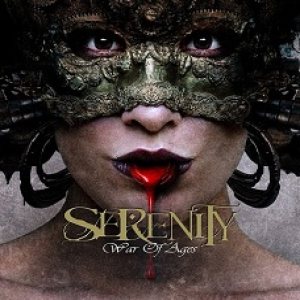 1. Serenity – War of Ages:
1. Serenity – War of Ages: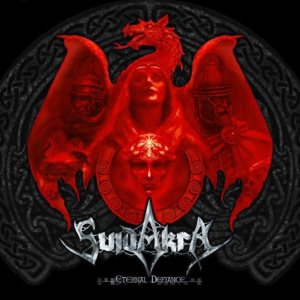 2. Suidakra – Eternal Defiance:
2. Suidakra – Eternal Defiance: 4. Carcass – Surgical Steel:
4. Carcass – Surgical Steel:  5. Falkenbach – Asa:
5. Falkenbach – Asa: 6. Orphaned Land – All Is One:
6. Orphaned Land – All Is One:  7. Rotting Christ – Kata Ton Daimona Eaytoy:
7. Rotting Christ – Kata Ton Daimona Eaytoy: 8. In Solitude – Sister:
8. In Solitude – Sister: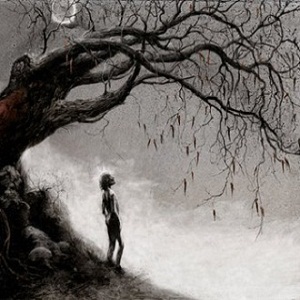 9. October Falls – The Plague of a Coming Age:
9. October Falls – The Plague of a Coming Age:  10. Tribulation – The Formulas of Death:
10. Tribulation – The Formulas of Death:  1. Therion – Les Fleurs Du Mal:
1. Therion – Les Fleurs Du Mal: 2. Pharaoh – Bury the Light:
2. Pharaoh – Bury the Light: 3. Be’lakor – Of Breath and Bone:
3. Be’lakor – Of Breath and Bone: 4. Sabaton – Carolus Rex:
4. Sabaton – Carolus Rex: 5. Barren Earth – The Devil’s Resolve:
5. Barren Earth – The Devil’s Resolve: 6. Anathema – Weather Systems:
6. Anathema – Weather Systems: 7. Kreator – Phantom Antichrist:
7. Kreator – Phantom Antichrist: 8. Dawnbringer – Into the Lair of the Sun God:
8. Dawnbringer – Into the Lair of the Sun God: 9. Enslaved – RIITIIR:
9. Enslaved – RIITIIR: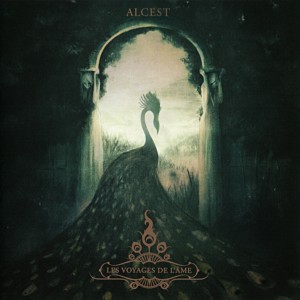 10. Alcest – Les Voyages De L’âme:
10. Alcest – Les Voyages De L’âme: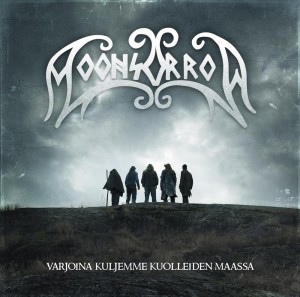 Moonsorrow – Varjoina Kuljemme Kuolleiden Maassa:
Moonsorrow – Varjoina Kuljemme Kuolleiden Maassa: Primordial – Redemption at the Puritan’s Hand:
Primordial – Redemption at the Puritan’s Hand: Hammers of Misfortune – 17th Street:
Hammers of Misfortune – 17th Street: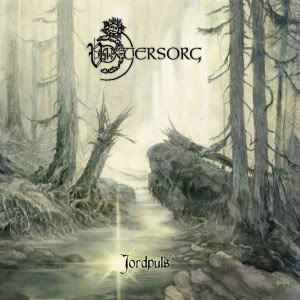 Vintersorg – Jordpuls:
Vintersorg – Jordpuls: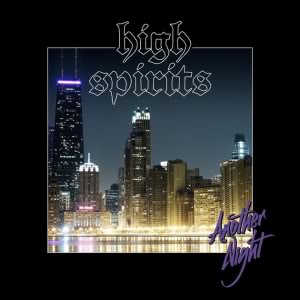 High Spirits – Another Night:
High Spirits – Another Night: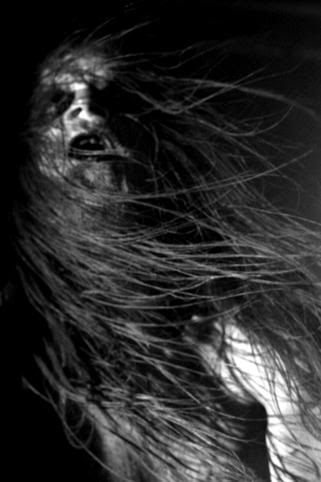 It should be all too clear by now that Gotrich and Stosuy do not like traditional or power metal at all. To such a degree that they will willingly ignore popular, widely lauded albums that fall into those styles. To each his own right? Yes. But here’s my problem: these are two very influential writers. Their opinions as mentioned before are parroted around the web, and frankly, that’s where a lot of this type of discussion takes place. What concerns me is that these lists are being trotted out for readers and listeners not already familiar with metal in general. What Gotrich and Stosuy present to these types of audiences is a mere sliver of the many styles of metal that are actually available out there. An NPR listener might actually be capable of being interested in metal that is delivered with a clean, melodic vocalist, or be able to enjoy a record that isn’t washed out in synths and shoegaze influences (cheap shot I know). There are plenty of bands who put out quality releases that this hypothetical person could enjoy, but they might never know about them.
It should be all too clear by now that Gotrich and Stosuy do not like traditional or power metal at all. To such a degree that they will willingly ignore popular, widely lauded albums that fall into those styles. To each his own right? Yes. But here’s my problem: these are two very influential writers. Their opinions as mentioned before are parroted around the web, and frankly, that’s where a lot of this type of discussion takes place. What concerns me is that these lists are being trotted out for readers and listeners not already familiar with metal in general. What Gotrich and Stosuy present to these types of audiences is a mere sliver of the many styles of metal that are actually available out there. An NPR listener might actually be capable of being interested in metal that is delivered with a clean, melodic vocalist, or be able to enjoy a record that isn’t washed out in synths and shoegaze influences (cheap shot I know). There are plenty of bands who put out quality releases that this hypothetical person could enjoy, but they might never know about them.
 2. Nightwish – Imaginaerum:
2. Nightwish – Imaginaerum: 3. Taake – Noregs Vaapen:
3. Taake – Noregs Vaapen: 4. Falconer – Armod:
4. Falconer – Armod: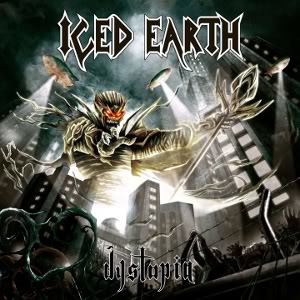 5. Iced Earth – Dystopia:
5. Iced Earth – Dystopia: 6. Edguy – The Age of the Joker:
6. Edguy – The Age of the Joker: 7. Týr – The Lay Of Thrym:
7. Týr – The Lay Of Thrym: 8. Burzum – Fallen:
8. Burzum – Fallen: 9. Absu – Abzu:
9. Absu – Abzu: 10. Ghost Brigade – Until Fear No Longer Defines Us:
10. Ghost Brigade – Until Fear No Longer Defines Us: